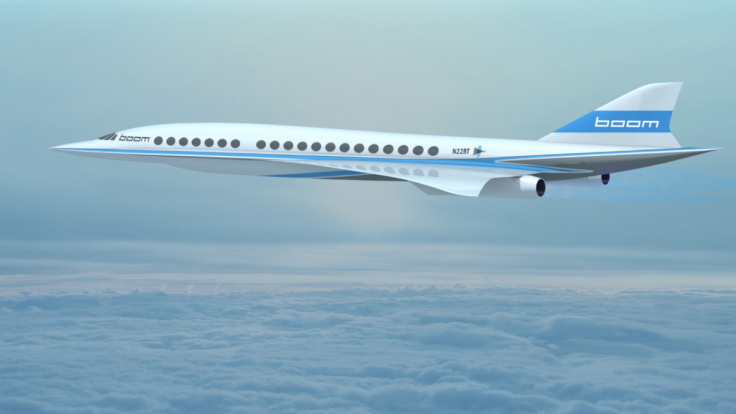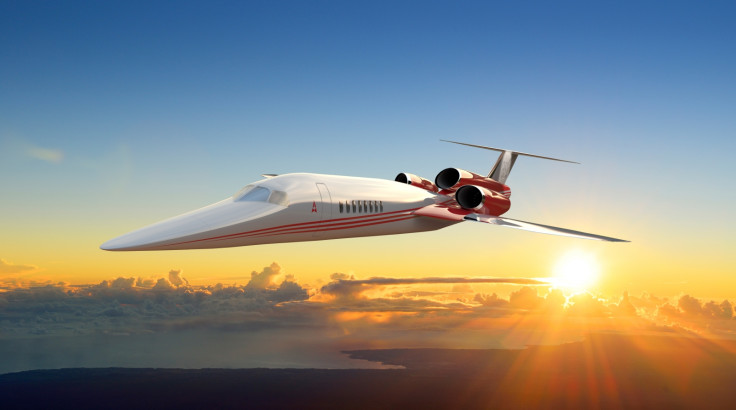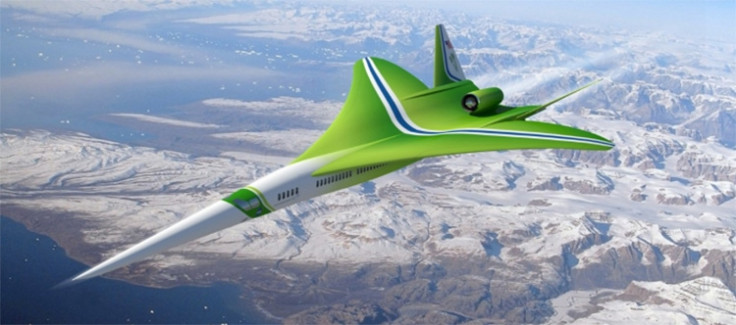Richard Branson's Virgin has picked Boom to provide supersonic jets – this is a huge risk

Everybody's keen to get into supersonic flight – now Virgin Group has signed a deal with Colorado-based start-up Boom Technology for 10 supersonic jets that can fly from London to New York in three and a half hours.
Since the iconic Concorde was retired in 2003 for losing huge amounts of money, making too much noise, producing a great deal of environment-harming carbon emissions, plus having poor public confidence following a horrendous airplane crash in 2000, commercial supersonic flight has been non-existent, but the dreams of super-fast travel haven't gone away for good.
Quietly in the background, several aeroplane heavyweights have been working on new technologies to make it possible for aircraft to fly at the speed of sound – 1,225 km/h, also known as "Mach number", up to Mach 5 (6,126 km/h), while mitigating the problems that the Concorde had, and slowly the buzz around supersonic flight is returning.
Virgin's deal with Boom is interesting, but the reality is that it's not a confirmed sale, but merely means that Virgin has signed a letter of intent to purchase 10 supersonic aircraft from Boom for $2bn (£1.4bn) if the start-up can deliver on its promises – which are to create a 40-seater supersonic jet from a light carbon fibre composite (usually used to make drones) that can travel at Mach 2.2 (2,333km/h) and have it ready by 2017.
Boom also says it has secured a letter of intent from an unnamed European carrier for 15 supersonic planes, which brings the total to $5bn in business, and the idea is for Virgin and carrier X to charge round-trip tickets at around $5,000 per passenger.
Boom has potential, but there are many others more experienced

But the thing that many mainstream media have ignored in the excitement over super-fast travel is the fact that Boom, which is backed by Y Combinator and has raised $2.1m in seed funding so far, is just another figure in a market that is already quite crowded.
For starters, there's French aeroplane manufacturer Airbus, which has formed an alliance with Nevada-based Aerion Corporation, which has developed the Mach 1.5 Aerion AS2 supersonic business jet.
Then there's aerospace and defence heavyweight Lockheed Martin, which has the added feather in its cap of assistance and now $20m in funding from Nasa, whose scientists are working to develop new technologies that can defeat the sonic boom problem, such as Quiet Supersonic Technology (Quesst), which turns the resulting thundering sonic clap from an aircraft breaking the sound barrier into a soft thump.
Smaller business jets are predicted to suceed, not commercial
Aerion's AS2 is a small business aircraft that can only carry eight to 12 passengers, and Lockheed Martin's N+1 is only suited for carrying five to 10 people, because the aircraft manufacturers feel that this business model is where supersonic is most likely to find its sweet spot.
"Supersonic may be useful for a business jet. Consumer customers only pay what they pay. In order to cover your costs and make a profit, you'd have to charge an entire plane First Class tickets," Teal Group analyst Richard Aboulafia told IBTimes UK back in July 2015 when we first investigated the technology.
"Business has a completely different elasticity in terms of price, so they might use a supersonic business jet for 400 hours a year with only four people travelling in it. I'm pretty confident about this being used by the mid-2020s."
Only if smaller business aircraft make it big with supersonic will large aircraft manufacturers like Boeing and Airbus consider N+2 aircraft, which carry at least 35 people, so Boom might well be taking a risk to push forward with larger aircraft at this early juncture, as it's a big ask to expect regular consumers to want to pony up $5,000 per ride.
Don't get carried away by speed, the reality isn't all that

"I think the future for supersonic is bright. In my time, we will easily see supersonic flights for the N+1 aircraft. It will take a bit longer to propagate into N+2 and N+3 flights," David Richwine, an associate project manager with the Commercial Supersonic Technology Project and Low-Boom Flight Demonstration at Nasa, told IBTimes UK.
Also, when asked recently by Bloomberg, Aboulafia expressed scepticism over how Boom intends to mitigate the sonic boom and the way the firm is designing its aircraft, saying: "You kind of design a plane around an engine rather than the other way around. Let me know when we can hear their engine."
And don't even get us started on regulatory hurdles, which are much harder to overcome than they were in the 1960s and 1970s. This is leading Airbus and Aerion to have their supersonic jet fly supersonic only over open water, instead slowing down to fly subsonic over land, because perceptions will take a long time to change.
"We're very close to understanding the technology enough to get a regulatory change from the Federal Aviation Administration (FAA), but that takes a long time, at least six years," said Richwine.
For now, Boom has 11 engineers, some of whom are industry veterans, and a lot of ambition, but in its photoshoot with Bloomberg Businessweek, Boom's staff is pictured in a cockpit made of cardboard and plywood. Perhaps its proprietary technology is amazing, but maybe Boom should also look to working with industry veterans like Nasa, as the problems aren't simple and neither are the solutions.
© Copyright IBTimes 2025. All rights reserved.






















